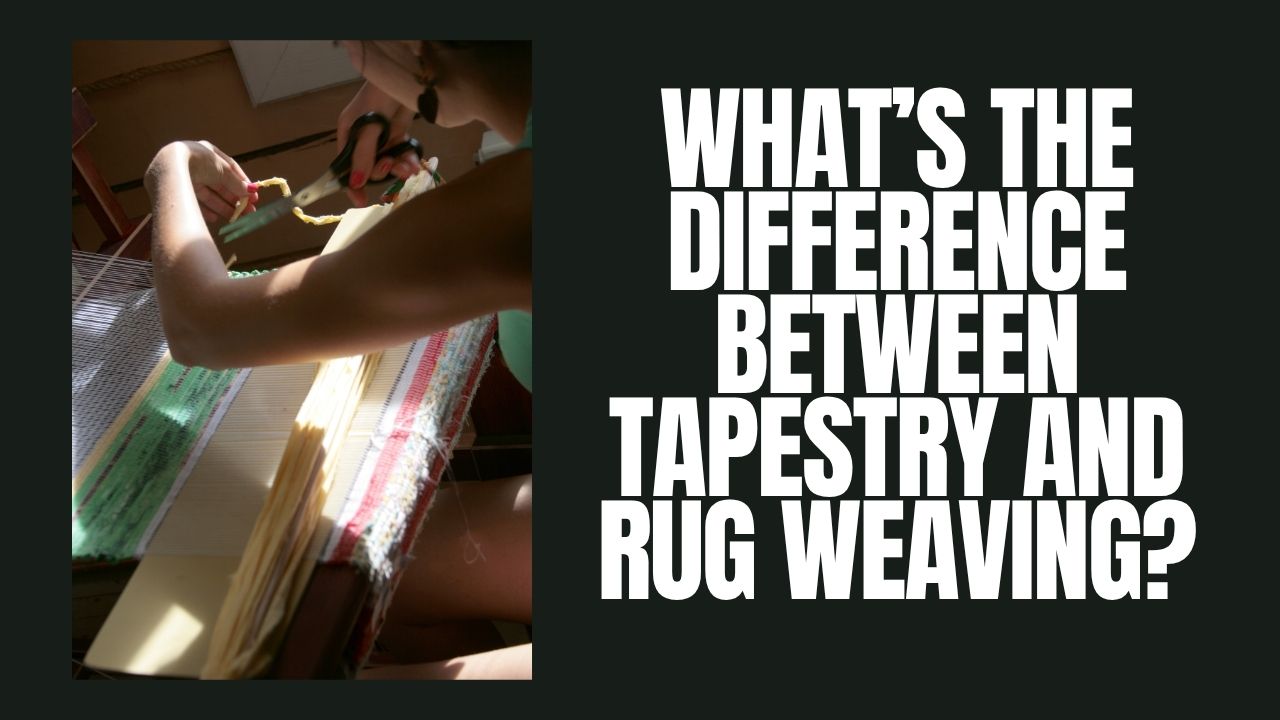Tapestry and rug weaving are both ancient textile arts that involve interlacing threads to create beautiful, functional pieces. However, while they may look similar to the untrained eye, these two practices have distinct purposes, techniques, materials, and structural differences. Whether you’re a beginner weaver or a curious textile enthusiast, understanding these key differences can help you better appreciate or engage in either craft.
1. Purpose & Functionality
Tapestry Weaving:
Tapestries are primarily decorative wall hangings. They are not meant to be walked on or used for high-wear purposes. The focus is on detailed imagery, storytelling, or abstract design.
- Main purpose: Artistic expression or decoration
- Durability: Not designed for heavy use
- Usage: Wall décor, art installations, and historical storytelling
Rug Weaving:
Rugs are functional floor coverings. They are built to withstand foot traffic, provide insulation, and add comfort underfoot.
- Main purpose: Utility and decoration
- Durability: Designed for long-term wear
- Usage: Floors, mats, and sometimes heavy wall décor
2. Technique & Structure
Tapestry Weaving Technique:
- Weaving is weft-faced – meaning the horizontal threads (weft) cover the vertical ones (warp), hiding the base structure.
- Weavers build intricate patterns or images by changing colors and directions of weft threads.
- Often done on an upright (vertical) loom, but smaller tapestries can use a frame loom.
- Weft threads are discontinuous — different colored threads are used in sections.
Rug Weaving Technique:
- Often uses pile weaving (adding knots between weft threads), especially in traditional Oriental rugs.
- Can be flat-woven (like kilims) or tufted for extra thickness.
- Constructed to be thicker and tighter, with stronger warp and weft tension.
- Typically woven on horizontal looms or floor-based looms.
3. Materials Used
Tapestry Weaving:
- Usually involves fine yarns or threads — wool, cotton, silk, or linen.
- Weft threads are often colorful and chosen for aesthetic purposes.
- Focuses on subtle color blending and detail.
Rug Weaving:
- Requires durable, thicker materials like wool, jute, polyester, or synthetic blends.
- Designed to withstand abrasion and compression.
- Less focus on detail, more on durability and texture.
4. Design Complexity
Tapestry Weaving:
- Highly detailed — can resemble paintings or complex motifs.
- Often involves figurative scenes, landscapes, or symbolic imagery.
- Artists use techniques like hatching, shading, and outlining for visual depth.
Rug Weaving:
- More geometric, repetitive, or symmetrical patterns.
- Simpler in terms of design variation due to the need for durability.
- Still visually rich but generally less pictorial than tapestries.
5. Comparison Table: Tapestry vs. Rug Weaving
| Aspect | Tapestry Weaving | Rug Weaving |
|---|---|---|
| Purpose | Decorative (wall hangings, artwork) | Functional (floor use, comfort) |
| Durability | Fragile, not for wear and tear | Highly durable and tough |
| Weaving Type | Weft-faced with discontinuous weft | Pile or flat-weave; often knotted |
| Design Style | Pictorial, narrative, abstract | Geometric, symmetrical, repetitive |
| Material | Fine yarns (wool, silk, cotton) | Thick yarns (wool, jute, polyester) |
| Loom Type | Vertical or frame loom | Horizontal or floor loom |
| Use of Texture | Smooth, flat texture | Thick, textured, often with pile |
| Primary Focus | Visual storytelling, artistry | Function, texture, pattern |
6. Can You Use the Same Yarn or Loom?
In most cases, tapestry yarn is too fine for a durable rug, while rug yarn is too coarse and bulky for delicate tapestry work. The looms, however, can sometimes be adapted — for instance:
- A frame loom may work for both, if you’re creating a small rug or a decorative wall hanging.
- Floor looms are better suited for rugs due to the tension required.
Conclusion
While tapestry and rug weaving share common roots in textile art, they serve very different purposes and require distinct approaches. Tapestry weaving is a canvas for creativity, allowing for visual storytelling and expressive details. Rug weaving, by contrast, is grounded in utility and strength, balancing form and function.
Understanding these differences helps you select the right techniques, tools, and materials for your craft — and ensures your creations are both beautiful and long-lasting. Whether you’re weaving for the wall or the floor, each method offers its own artistic rewards.



